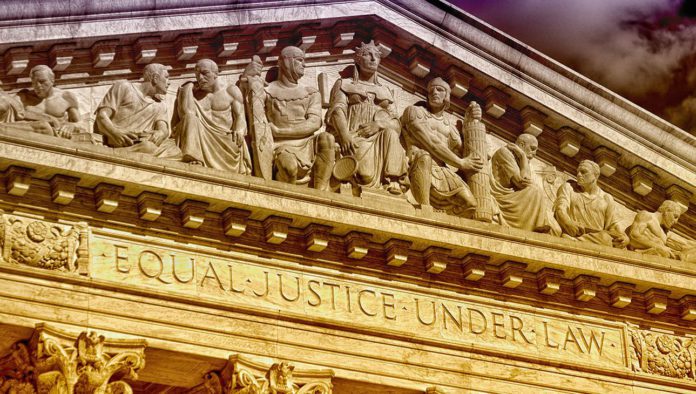
While growing up as a teenager, there was an expression used by my parents that has stayed with me my entire life.
When I would do something they disapproved of, they would say: “Son, why do you always take one step forward and two steps back.”
That seems to be where we are today concerning affirmative action in higher education.
We as a nation have made significant progress over the years, and suddenly, our U.S. Supreme Court tells us that what these institutions have been doing all these years has been unconstitutional.
Affirmative action refers to a set of policies and practices that aim to provide equal opportunities for historically underrepresented groups (women, racial and ethnic minorities, and people with disabilities), particularly in the areas of education and employment.
It has been used to eliminate race-based discrimination against college applicants and increase diversity in student populations.
The Supreme Court last week struck down affirmative action admissions policies used by Harvard College and the University of North Carolina to increase diversity on their campuses.
Legal observers say that decision will have enormous consequences for higher education and could send ripple effects into corporate diversity programs as well.
Over the years, the Supreme Court has taken significant steps forward on affirmative action issues.
The court’s interpretation of affirmative action has evolved with changing societal attitudes and legal arguments, and future rulings may continue to shape its position on this issue.
In Regents of the University of California vs. Bakke (1978), the court determined that affirmative action was lawful, a ruling it has upheld multiple times, including in the 2003 case Grutter vs. Bollinger and the 2013 and 2016 cases Fisher vs. University of Texas.
In these decisions, white women claimed they were denied higher education admission because of their race.
Ironically, white women are the greatest beneficiaries of affirmative action policies and practices.
From college campuses to the American workplace, white women are more educated and make up a bigger slice of the workforce due to decades of affirmative action policies.
They also have made advancements into corporate leadership that people of color, particularly women of color, have not.
The decisions of the court in these latest two cases, Students for Fair Admissions Inc. vs. the University of North Carolina and Students for Fair Admissions Inc. vs. President & Fellows of Harvard College, have basically reversed 45 years of legal precedent.
Justice Sotomayor, one of three dissenting jurists, noted that this decision “rolls back decades of precedent and momentous progress. It holds that race can no longer be used in a limited way in college admissions to achieve such critical benefits” and that “the Court cements a superficial rule of colorblindness as a constitutional principle in an endemically segregated society.”
Critics of affirmative action continue to argue that it is unfair to give preferential treatment to certain groups based on their race or gender.
One of the great benefits of attending college is the diversity of people one is exposed to during their college experience.
Interacting with individuals from diverse backgrounds helps students develop interpersonal and critical thinking skills, empathy, and an appreciation for different perspectives, which can help them become more well-rounded.
Diversity, of course, has its challenges. Students who attend diverse colleges may be exposed to prejudice and discrimination, which can be frustrating and harmful.
They also may be faced with cultural norms and values that are different and can be difficult to adjust to.
The benefits of diversity, however, far outweigh the challenges.
In the final analysis, affirmative action is simply a way of correcting decades of unfair treatment of people of color in this nation and creating for them the necessary pathways to greater opportunities.
This recent Supreme Court decision will undoubtedly have a ‘chilling effect’ on students of color.
While affirmative action programs have helped to increase the number of students of color at selective colleges and universities, without these programs, it is likely that the number of students exposed to these opportunities will sharply decline.
Some of these students may be less inclined to apply to selective colleges and universities if they believe they could only be admitted with the support of affirmative action policies.
This could lead to fewer students of color attending these colleges, further decreasing diversity on these campuses.
That would be a most unfortunate outcome.
I am disappointed in the Supreme Court’s decision, to say the least. It has made a terrible mistake, and once again, those who are the most disadvantaged will suffer the greatest.
Affirmative action has been a mainstay in America’s fight for equal opportunity for all and has stood as a mechanism for greater opportunity for so many who might have otherwise been ignored or cast aside.
It is important to monitor the effects of this ruling going forward. Because the ruling still is new, it is uncertain how admissions policies at colleges and universities will change.
We will be watching.
(Follow me, TSD’s education columnist, on Twitter @curtisweathers. Email me at curtislweathers@gmail.com.)



